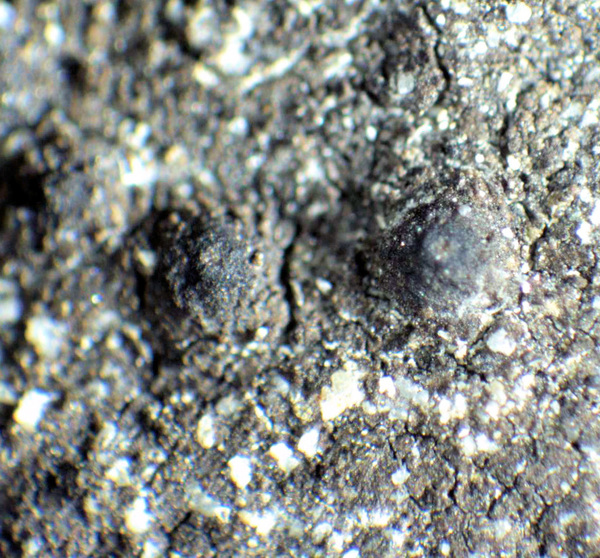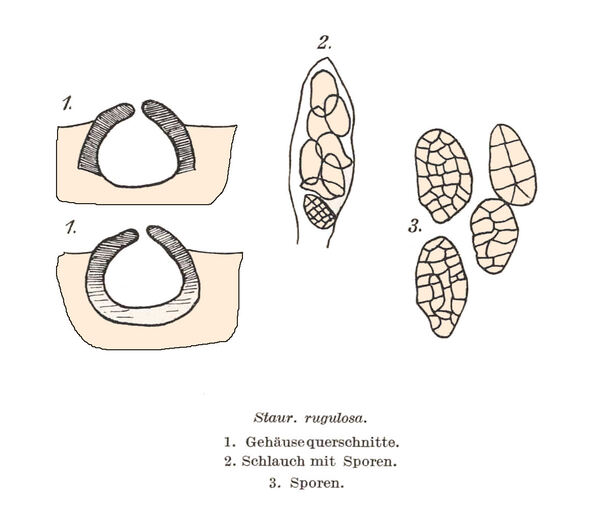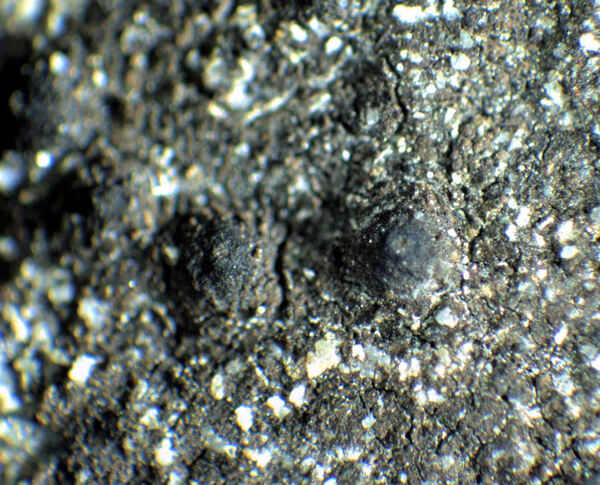Nesothele rugulosa (A. Massal.) Orange
in Orange & Chhetri, Lichenologist, 54: 154, 2022. Basionym: Polyblastia rugulosa A. Massal. - Mem. Lichenogr.: 139, 1853.
Synonyms: Polyblastia amphiboloides (Nyl.) Trevis.; Staurothele amphiboloides (Nyl.) Zahlbr.; Staurothele rugulosa (A. Massal.) Arnold; Thelidium hammoniense Erichsen; Verrucaria amphiboloides Nyl.
Distribution: N - Ven (Lazzarin 2000b), TAA, Piem, Lig (Giordani & al. 2016). C - Marc (Nimis & Tretiach 1999).
Description: Thallus crustose, episubstratic, rather thick, rimose-areolate, dirty cream, greenish grey or greenish brown. Areoles flat to strongly convex, crowded, with a rugose surface. Perithecia black, often brown around the ostiolar region, up 0.4-0.6 mm across, half to completely immersed amongst the areoles. Exciple dark throughout; involucrellum present, adpressed to exciple, dimidiate to reaching the base of the perithecium; hymenial gel I+ red (I+ blue at very low concentrations of iodine), K/I+ blue; hymenial algae 1-2(-2.4) times as long as wide, rarely isodiametric, usually 2-7 x 1.5-3 μm; hamathecium of periphyses and periphysoids, interascal filaments absent. Asci 8-spored, clavate, the wall thickened above, with an ocular chamber, after dehiscence with a delicate extruded endotunica, I-, K/I-. Ascospores muriform, hyaline, ellipsoid, (25-)30-35(-38) x 12-20 μm. Photobiont chlorococcoid (Stichococcus), present in both thallus and hymenium. Spot tests: K-, C-, KC-, P-, UV-. Chemistry: without lichen substances.Note: on limestone, dolomite, calcareous sandstone, often on walls, roofing tiles etc., usually in upland areas; probably more widespread in the Alps; the record from Marche is the southernmost in Italy.
Growth form: Crustose
Substrata: rocks
Photobiont: green algae other than Trentepohlia
Reproductive strategy: mainly sexual
Commonnes-rarity: (info)
Alpine belt: rare
Subalpine belt: rather rare
Oromediterranean belt: absent
Montane belt: rather rare
Submediterranean belt: absent
Padanian area: absent
Humid submediterranean belt: absent
Humid mediterranean belt: absent
Dry mediterranean belt: absent
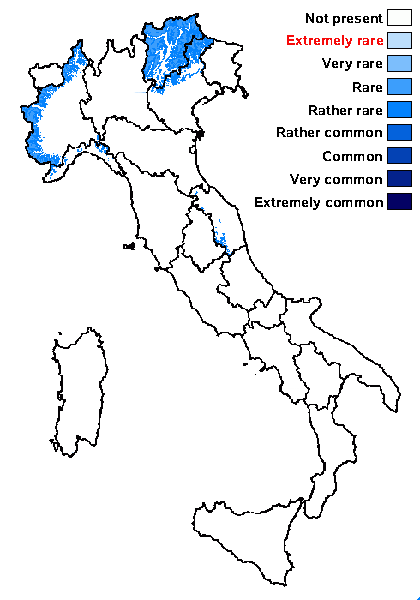
Predictive model
Herbarium samples
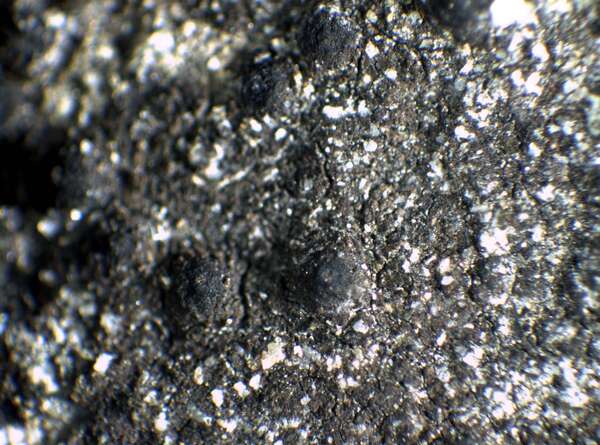

P.L. Nimis; Owner: Department of Life Sciences, University of Trieste
Herbarium: TSB (24091)
2001/11/30
Growth form: Crustose
Substrata: rocks
Photobiont: green algae other than Trentepohlia
Reproductive strategy: mainly sexual
Commonnes-rarity: (info)
Alpine belt: rare
Subalpine belt: rather rare
Oromediterranean belt: absent
Montane belt: rather rare
Submediterranean belt: absent
Padanian area: absent
Humid submediterranean belt: absent
Humid mediterranean belt: absent
Dry mediterranean belt: absent

Predictive model
| Herbarium samples |


 Index Fungorum
Index Fungorum
 GBIF
GBIF
